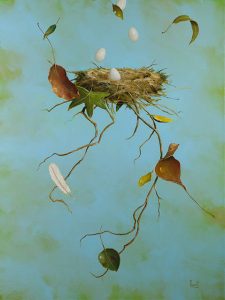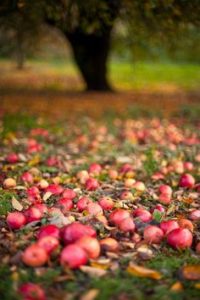 The Yogabliss on-line Moving into Meditation classe met this morning. Today we explored how mindfulness practice, especially mindfulness of the body, can help us to age with loving awareness and compassion. Every day we are invited: Awaken. Love what is here. No matter where we are on life’s journey the invitation is open. The invitation to live in truth: to live for what really matters every moment we have left.
The Yogabliss on-line Moving into Meditation classe met this morning. Today we explored how mindfulness practice, especially mindfulness of the body, can help us to age with loving awareness and compassion. Every day we are invited: Awaken. Love what is here. No matter where we are on life’s journey the invitation is open. The invitation to live in truth: to live for what really matters every moment we have left.
Much of the practice centered around insights about aging drawn from Kathleen Dowling Singh’s wonderful book, The Grace in Aging: Awaken As You Grow Older. Kathleen, a years long hospice worker, spiritual advisor and writer, died in October 2017. Her children said simply that their mother would want us all to know that “she was an ordinary person dying an ordinary death.” Her book is a treasure of practical insights and steps “to allow awakening to unfold – transforming predictable sufferings of aging into profound opportunities for growth in clarity, love, compassion and peace.” I am aging as many of my dear ones. I am grateful for this resource and hope to draw from in it in the months and years to come.
We heard Zen poet David Budbill’s poems about the importance and appreciating the ordinary beauty in our lives. David’s poems are whimsical and wry sketches of our earthly existence.
We heard insights about life’s importance from Pema Chodron. Ani Pema teaches meditation and Buddhist philosophy as it applies to everyday life. You can find many of her teachings in various forms at her web-site
In her article, Meditation in Motion, meditation and yoga instructor Jill Satterfield encourages us to explore full awareness of our bodily experience to wake up and be with what is.
We ended with a poem from Rebecca del Rio’s collection, Prescription for the Disillusioned.
I invite you to experience this moment fully. You might become aware of : the momentum of movement changing; your body shifting and settling; your breathing slowing. I invite you to give your self over to this time. Each moment of our lives arises and passes away. Notice how each one begins and ends. Feel in-breath entering; out-breath releasing.
Pema Chodron writes:
” . . . nothing is static or fixed, . . . all is fleeting and impermanent . . . the first mark of existence . . . the ordinary state of affairs. Everything . . . in process. Everything – every tree, every blade of grass, all the animals, insects, human beings, . . . the animate and the inanimate – is always changing, moment to moment . . .”
Right now we can experience how we are part of it all. All are part of us. We are home to countless of microorganisms: bacteria, archaea, fungi and protists live within and also on our bodies. Many of these creatures are essential to our well being. They arise and pass away. Our own organism lives within and on Earth’s body. In this turning moment we may be aware of how we, too, are born and die.
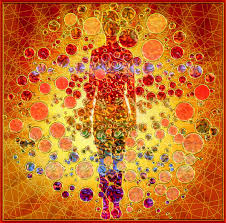 I invite you to feel your ever changing body and how it’s been carrying you though life. You might start with your legs and feet. How do they feel after carrying your so many miles? Your arms and hands at rest after having reached, touched and drawn close; created and destroyed. The strong back holding you up. The soft tissues of your skin and inner membranes containing and protecting you. The many organs keeping you alive. Your brain – in your head and throughout your body allowing you to sense, feel and think.
I invite you to feel your ever changing body and how it’s been carrying you though life. You might start with your legs and feet. How do they feel after carrying your so many miles? Your arms and hands at rest after having reached, touched and drawn close; created and destroyed. The strong back holding you up. The soft tissues of your skin and inner membranes containing and protecting you. The many organs keeping you alive. Your brain – in your head and throughout your body allowing you to sense, feel and think.
In her article, Meditation in Motion, Jill Satterfield writes:
“The body isn’t in the past or future, it’s not conceptual or imagined; it’s part of nature and contains all of nature’s elements. It houses our awareness, is shaped by our stories, thoughts, and emotions, and holds our memories within its tissues. The body is our house—and how we live in it and where we occupy it are uniquely ours, as well as being part of the common human experience. The body is . . . an exquisite vehicle for our practice of waking up and being with what is.”
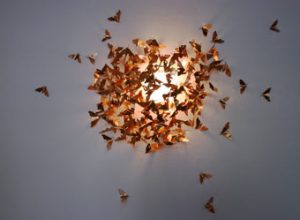 Our practice invites us to wake up. We awaken to the truth of impermanence. We are born. We are ever subject to illness, old age, death and losing who and what we hold dear. Yet we often live as if life were otherwise. The truth of impermanence is obscured in our everyday experience. We see the same people, engage in the same activities and even think the same thoughts and feel the same feelings. This gives us the illusion of permanence.
Our practice invites us to wake up. We awaken to the truth of impermanence. We are born. We are ever subject to illness, old age, death and losing who and what we hold dear. Yet we often live as if life were otherwise. The truth of impermanence is obscured in our everyday experience. We see the same people, engage in the same activities and even think the same thoughts and feel the same feelings. This gives us the illusion of permanence.
In her book, The Grace in Aging, Kathleen Dowling Singh, writes:
“Most of us see the currents in the river but never actually take in what they mean for the boat we’re floating in. A good measure of stressful effort can go into avoiding any call to wake up, notice, see the patterns of impermanence. . . Opening deeply to the truth of our own aging is wise. Opening to the truth of our own impermanence is wise. Although such opening may not come easily . . . it is important to do so if we wish to mindfully use the time remaining to us.”
What if we, like Zen poet David Budbill, love the simple moments of our days?
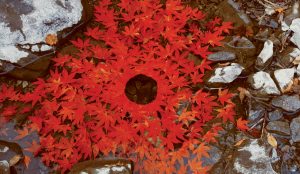 This Morning
This Morning
Oh, this life,
the now,
this morning,
which I
can turn
into forever
by simply
loving
what is here,
is gone
by noon.
Awaken. Love what is here. No matter where we are on life’s journey the invitation is open. The invitation to live in truth: to live for what really matters every moment we have left. By lightening our attachment to the small separate self we experience our inter-being. Our part of the sacred All. We are called to an intimacy with life every moment of our days. How do we answer to the call? Can we, like David, learn from the Apple Blossoms?
Apple blossoms
swell and bloom
and fall.
No one can
escape
old age.
Can we, like David, find solace and beauty in the ordinary?
During the Warblers’ Spring Migration, While Feeling Sorry for Myself for Being Stuck Here, the Dooryard Birds Save Me from My Melancholy
I am not a rare warbler,
brilliant migratory avatar,
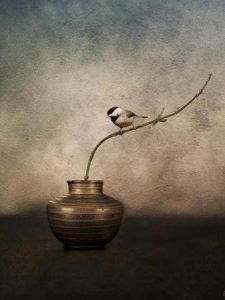 here only momentarily
here only momentarily
to sing
a brilliant song.
I am a common chickadee
a long time here to sing
a common song about
how beautiful
the ordinary is.
What could be more ordinary than the beautiful bodies we’ve live in for all of our lives?
I invite you bring your awareness to the field of sensation that is your body. Can you have an intimate experience of the changing mix of tightness, heat, cold, pulsations, waves of more and less intense sensations. Perhaps you can observe how conditions in this moment give rise to the next feeling moment.
Jill Satterfield writes:
“Being in tune with our bodies is a way to be intimately involved in having choice. Noticing a small vibration, a contraction, or a tightening of the breath all can signal that something is about to be announced, and if not heeded it might be announced in a rather big way. . . . As we inhabit our body with increasing sensitivity, we learn its unspoken language and patterns, which gives us tremendous freedom to make choices.”
The way we inhabit our bodies reflects the way we inhabit our lives. How are you inhabiting your body right now?
Kathleen Dowling Singh speaks to those of us whose bodies have lived through many seasons. She writes:
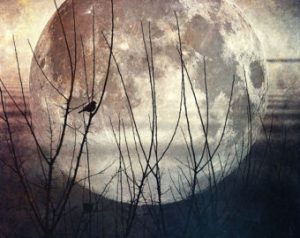 “There are fewer full moons whose light we can sit in than full moons whose light we have sat in before. There are fewer pale green springs and autumn’s falling leaves, fewer quiet blanketings of snow, fewer ion-charged moments before a fierce summer storm unleashes itself. . . . Like our breath, all of the patterned markers of our impermanence are numbered.”
“There are fewer full moons whose light we can sit in than full moons whose light we have sat in before. There are fewer pale green springs and autumn’s falling leaves, fewer quiet blanketings of snow, fewer ion-charged moments before a fierce summer storm unleashes itself. . . . Like our breath, all of the patterned markers of our impermanence are numbered.”
How do these observations land for you today? Being old or moving toward elderhood can feel new. What would might you change, how might you live if you didn’t have time to lose?
Kathleen suggests that:
“Using these last years of our life as a time to awaken can help us cope and even grow in love and wisdom as we confront decline, illness and loss. . . . We can also, with our own spiritual ripening, offer all those younger ones who follow behind us in our spiritually impoverished culture the witness that awakening is possible. . . . How kind and wise it would be to live these last years in presence, authenticity and radically simple sanity.”
Presence, authenticity, simplicity.
Poet Rebecca del Rio writes:
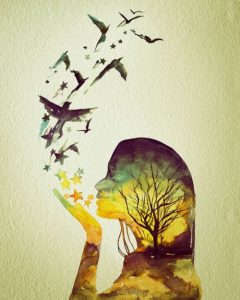 There is a place you can go
There is a place you can go
where you are quiet,
a place of water and the light
on the water. Trees are there,
leaves, and the light
on leaves moved by air.
Birds, singing, move
among leaves, in leaf shadow.
After many years you have come
to no thought of these,
but they are themselves
your thoughts. There seems to be
little to say, less and less.
Here they are. Here you are.
Here as though gone.
None of us stays, but in the hush
where each leaf in the speech
of leaves is a sufficient syllable
the passing light finds out
surpassing freedom of its way.
None of us stays, but in the hush where each leaf in the speech of leaves is a sufficient syllable . . . the passing light finds freedom

